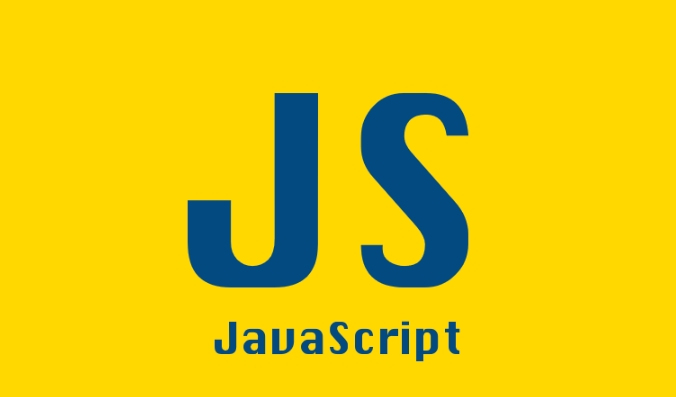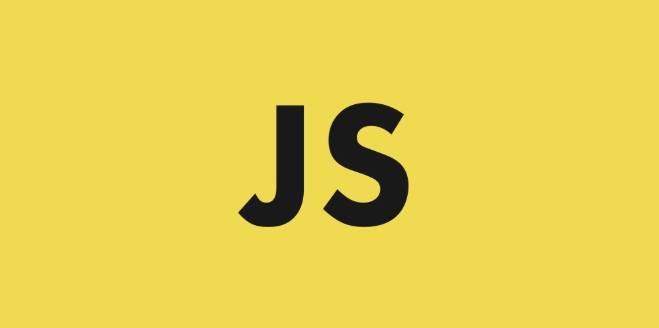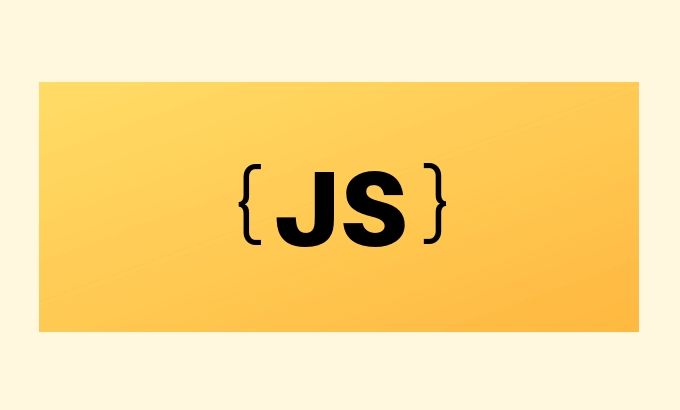How to check if an object has a key in JavaScript?
Jul 13, 2025 am 02:01 AMThere are four main methods to determine whether an object contains a certain key in JavaScript, which are suitable for different scenarios. 1. Use the hasOwnProperty method to check the object's own properties (excluding the prototype chain). The advantage is to accurately check its own properties, but it should be noted that this method is not available for objects that disable hasOwnProperty; 2. Use the in operator to check the object itself and the properties on the prototype chain. The advantage is that the coverage range is wide, but may contain undesired prototype chain properties; 3. Combined with Object.keys() or Reflect.ownKeys(), you can determine whether the key exists through an array method, which is suitable for checking all keys at once; 4. When dealing with special circumstances, you should first determine whether the variable is an object, and use Object.prototype.hasOwnProperty.call(obj, key) to avoid interference from prototype chains.

It is a very common operation to determine whether an object contains a certain key in JavaScript. The most direct way is to use Object.prototype.hasOwnProperty() method or the in operator. The following are several commonly used methods and their applicable scenarios.

1. Use hasOwnProperty method
This is one of the most common methods to check if the object itself has a certain key (excluding properties on the prototype chain):
const obj = { name: 'Alice', age: 25 };
console.log(obj.hasOwnProperty('name')); // true
console.log(obj.hasOwnProperty('gender')); // false ? Advantages : Only check the object's own attributes and will not find the prototype chain.
??Note : If the object is created, hasOwnProperty is disabled (for example, use Object.create(null) ), then this method is not available.

2. Use the in operator
If you also want to check the properties of the object inherited from the prototype chain, you can use in :
const obj = { name: 'Alice' };
console.log('name' in obj); // true
console.log('toString' in obj); // true (from Object prototype) ? Advantages : Can check the properties on the prototype chain.
??Note : Sometimes you may not want to include attributes on the prototype chain, and you should choose to use them according to your needs.

3. Combine Object.keys() or Reflect.ownKeys()
If you want to view all keys at once and then determine whether they exist, you can also combine the array method to handle it:
const obj = { name: 'Alice', age: 25 };
console.log(Object.keys(obj).includes('name')); // true-
Object.keys()returns only enumerable properties. - If you also want to include keys of non-enumerable or Symbol type, you can use
Reflect.ownKeys(obj).
4. Tips for dealing with special circumstances
If you are not sure whether a variable is an object, you can make type judgment first:
function hasKey(obj, key) { return typeof obj === 'object' && obj !== null && key in obj; }For objects created with
Object.create(null), it does not havehasOwnProperty. At this time, you can useObject.prototype.hasOwnProperty.call(obj, key)to call safely.
Basically these are the methods. Different methods are suitable for different scenarios. The key is whether you only want to check your own attributes, or you also need to check the prototype chain, and whether you need to be compatible with special object structures.
The above is the detailed content of How to check if an object has a key in JavaScript?. For more information, please follow other related articles on the PHP Chinese website!

Hot AI Tools

Undress AI Tool
Undress images for free

Undresser.AI Undress
AI-powered app for creating realistic nude photos

AI Clothes Remover
Online AI tool for removing clothes from photos.

Clothoff.io
AI clothes remover

Video Face Swap
Swap faces in any video effortlessly with our completely free AI face swap tool!

Hot Article

Hot Tools

Notepad++7.3.1
Easy-to-use and free code editor

SublimeText3 Chinese version
Chinese version, very easy to use

Zend Studio 13.0.1
Powerful PHP integrated development environment

Dreamweaver CS6
Visual web development tools

SublimeText3 Mac version
God-level code editing software (SublimeText3)

Hot Topics
 Java vs. JavaScript: Clearing Up the Confusion
Jun 20, 2025 am 12:27 AM
Java vs. JavaScript: Clearing Up the Confusion
Jun 20, 2025 am 12:27 AM
Java and JavaScript are different programming languages, each suitable for different application scenarios. Java is used for large enterprise and mobile application development, while JavaScript is mainly used for web page development.
 Javascript Comments: short explanation
Jun 19, 2025 am 12:40 AM
Javascript Comments: short explanation
Jun 19, 2025 am 12:40 AM
JavaScriptcommentsareessentialformaintaining,reading,andguidingcodeexecution.1)Single-linecommentsareusedforquickexplanations.2)Multi-linecommentsexplaincomplexlogicorprovidedetaileddocumentation.3)Inlinecommentsclarifyspecificpartsofcode.Bestpractic
 How to work with dates and times in js?
Jul 01, 2025 am 01:27 AM
How to work with dates and times in js?
Jul 01, 2025 am 01:27 AM
The following points should be noted when processing dates and time in JavaScript: 1. There are many ways to create Date objects. It is recommended to use ISO format strings to ensure compatibility; 2. Get and set time information can be obtained and set methods, and note that the month starts from 0; 3. Manually formatting dates requires strings, and third-party libraries can also be used; 4. It is recommended to use libraries that support time zones, such as Luxon. Mastering these key points can effectively avoid common mistakes.
 JavaScript vs. Java: A Comprehensive Comparison for Developers
Jun 20, 2025 am 12:21 AM
JavaScript vs. Java: A Comprehensive Comparison for Developers
Jun 20, 2025 am 12:21 AM
JavaScriptispreferredforwebdevelopment,whileJavaisbetterforlarge-scalebackendsystemsandAndroidapps.1)JavaScriptexcelsincreatinginteractivewebexperienceswithitsdynamicnatureandDOMmanipulation.2)Javaoffersstrongtypingandobject-orientedfeatures,idealfor
 Why should you place tags at the bottom of the ?
Jul 02, 2025 am 01:22 AM
Why should you place tags at the bottom of the ?
Jul 02, 2025 am 01:22 AM
PlacingtagsatthebottomofablogpostorwebpageservespracticalpurposesforSEO,userexperience,anddesign.1.IthelpswithSEObyallowingsearchenginestoaccesskeyword-relevanttagswithoutclutteringthemaincontent.2.Itimprovesuserexperiencebykeepingthefocusonthearticl
 JavaScript: Exploring Data Types for Efficient Coding
Jun 20, 2025 am 12:46 AM
JavaScript: Exploring Data Types for Efficient Coding
Jun 20, 2025 am 12:46 AM
JavaScripthassevenfundamentaldatatypes:number,string,boolean,undefined,null,object,andsymbol.1)Numbersuseadouble-precisionformat,usefulforwidevaluerangesbutbecautiouswithfloating-pointarithmetic.2)Stringsareimmutable,useefficientconcatenationmethodsf
 What is event bubbling and capturing in the DOM?
Jul 02, 2025 am 01:19 AM
What is event bubbling and capturing in the DOM?
Jul 02, 2025 am 01:19 AM
Event capture and bubble are two stages of event propagation in DOM. Capture is from the top layer to the target element, and bubble is from the target element to the top layer. 1. Event capture is implemented by setting the useCapture parameter of addEventListener to true; 2. Event bubble is the default behavior, useCapture is set to false or omitted; 3. Event propagation can be used to prevent event propagation; 4. Event bubbling supports event delegation to improve dynamic content processing efficiency; 5. Capture can be used to intercept events in advance, such as logging or error processing. Understanding these two phases helps to accurately control the timing and how JavaScript responds to user operations.
 What's the Difference Between Java and JavaScript?
Jun 17, 2025 am 09:17 AM
What's the Difference Between Java and JavaScript?
Jun 17, 2025 am 09:17 AM
Java and JavaScript are different programming languages. 1.Java is a statically typed and compiled language, suitable for enterprise applications and large systems. 2. JavaScript is a dynamic type and interpreted language, mainly used for web interaction and front-end development.






